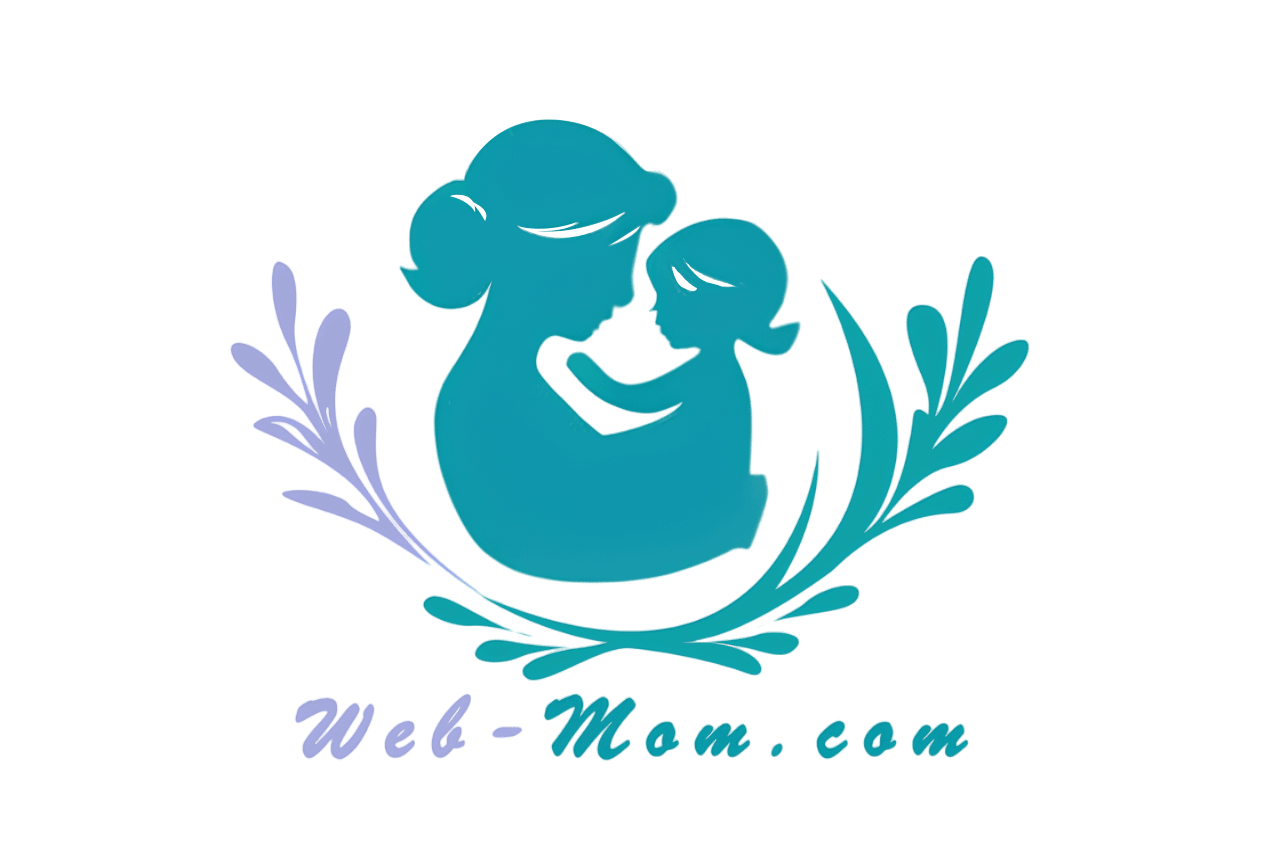Breastfeeding Tips for New Mom
BabyTips & Tricks 47 webmom June 26

WEB-MOM – Breastfeeding is a natural and rewarding way to nourish your baby, but it can also come with challenges, especially for new moms. At Web-Mom.com, we understand the importance of providing support and information to help you on your breastfeeding journey. This comprehensive guide offers practical tips, advice, and encouragement to make breastfeeding a positive experience for both you and your baby.
“Discover essential breastfeeding tips for new moms to ensure a successful and rewarding experience for you and your baby.”
In this article, we’ll cover various aspects of breastfeeding, including preparation, techniques, common challenges, and self-care. Whether you’re a first-time mom or looking to improve your breastfeeding experience, this guide will provide valuable insights and support.
Preparing for Breastfeeding
Educate Yourself
Educating yourself about breastfeeding before your baby arrives can help you feel more confident and prepared. Here are some ways to get started:
- Read Books and Articles: There are many excellent books and articles about breastfeeding that provide valuable information and tips.
- Attend Classes: Many hospitals and birthing centers offer breastfeeding classes. These classes can help you learn the basics and ask questions in a supportive environment.
- Join Support Groups: Joining a breastfeeding support group, either in-person or online, can provide you with a community of moms who share their experiences and offer support.
Gather Essential Supplies
Having the right supplies on hand can make breastfeeding more comfortable and convenient. Here are some essential items to consider:
- Nursing Bras and Pads: Invest in comfortable nursing bras and disposable or washable nursing pads to manage leaks.
- Breast Pump: A quality breast pump can be useful for expressing milk and building a supply for when you’re away from your baby.
- Nursing Pillow: A nursing pillow helps support your baby and reduce strain on your back and arms during breastfeeding.
- Breast Milk Storage Bags: These bags are essential for storing expressed milk safely in the refrigerator or freezer.
Breastfeeding Techniques
Finding the Right Position
Finding a comfortable breastfeeding position is crucial for both you and your baby. Here are some common positions to try:
- Cradle Hold: Hold your baby in your arms with their head resting in the crook of your elbow and their body facing you.
- Cross-Cradle Hold: Similar to the cradle hold, but you support your baby’s head with the opposite hand while they rest on the opposite arm.
- Football Hold: Hold your baby under your arm like a football, with their body along your side and their head near your breast.
- Side-Lying Position: Lie on your side with your baby facing you. This position can be comfortable for nighttime feedings.
Ensuring a Good Latch
A good latch is essential for effective breastfeeding and preventing discomfort. Here are some tips for achieving a good latch:
- Align Your Baby’s Body: Ensure your baby’s body is aligned with their head, neck, and spine in a straight line.
- Bring Your Baby to Your Breast: Hold your baby close to your breast, allowing them to open their mouth wide and latch onto the areola, not just the nipple.
- Check for Signs of a Good Latch: Look for signs such as your baby’s lips flanged outward, their chin touching your breast, and rhythmic sucking and swallowing.
Feeding on Demand
Feeding on demand means breastfeeding your baby whenever they show signs of hunger, rather than on a strict schedule. Here are some hunger cues to watch for:
- Rooting: Your baby turns their head toward your hand or breast when you touch their cheek.
- Sucking on Hands: Your baby puts their hands or fingers in their mouth and sucks.
- Fussiness: Your baby becomes fussy or restless, indicating they are ready to eat.
Overcoming Common Challenges
Sore Nipples
Sore nipples are a common issue for new moms, but they can be managed with proper care. Here are some tips:
- Ensure a Good Latch: A poor latch is often the cause of sore nipples. Make sure your baby is latching correctly.
- Use Lanolin Cream: Apply lanolin cream to your nipples after each feeding to soothe and protect them.
- Air Dry: Allow your nipples to air dry after breastfeeding to promote healing.
Engorgement
Engorgement occurs when your breasts become overly full and swollen. Here’s how to manage engorgement:
- Feed Frequently: Breastfeed frequently to keep milk flowing and prevent engorgement.
- Express Milk: If your breasts are too full, express some milk before breastfeeding to soften them and make latching easier.
- Cold Compresses: Apply cold compresses to your breasts between feedings to reduce swelling and discomfort.
Low Milk Supply
If you’re concerned about low milk supply, there are steps you can take to increase it:
- Feed Often: Breastfeed frequently to stimulate milk production.
- Stay Hydrated: Drink plenty of water to stay hydrated, as dehydration can affect milk supply.
- Eat a Balanced Diet: Ensure you’re eating a nutritious diet with plenty of calories to support milk production.
- Consult a Lactation Consultant: If you’re still concerned about your milk supply, consult a lactation consultant for personalized advice and support.
Pumping and Storing Breast Milk
Choosing a Breast Pump
A good breast pump can be a valuable tool for breastfeeding moms. Here are some options to consider:
- Manual Pumps: These pumps are operated by hand and are lightweight and portable.
- Electric Pumps: Electric pumps are more efficient and ideal for frequent use. They come in single or double options.
- Hospital-Grade Pumps: These pumps are the most powerful and efficient, often used for specific medical needs or when building a milk supply.
Pumping Tips
Pumping breast milk can help you build a supply and provide milk when you’re away from your baby. Here are some tips for successful pumping:
- Create a Routine: Establish a regular pumping schedule to maintain milk supply.
- Find a Comfortable Space: Choose a quiet, comfortable space for pumping to help you relax and encourage milk flow.
- Massage Your Breasts: Gently massage your breasts before and during pumping to stimulate milk flow.
- Use the Right Flange Size: Ensure you’re using the correct flange size for your breast pump to prevent discomfort and maximize milk output.
Storing Breast Milk
Proper storage of breast milk is essential for maintaining its quality and safety. Here are some guidelines:
- Use Storage Bags: Use breast milk storage bags or clean, BPA-free containers.
- Label and Date: Label each container with the date and time the milk was expressed.
- Refrigeration: Store breast milk in the refrigerator for up to 4 days.
- Freezing: Freeze breast milk in small quantities for up to 6 months. Thaw frozen milk in the refrigerator or by placing the container in warm water.
Self-Care for Breastfeeding Moms
Nutrition and Hydration
Maintaining good nutrition and hydration is crucial for breastfeeding moms. Here are some tips:
- Eat a Balanced Diet: Focus on a balanced diet with a variety of fruits, vegetables, whole grains, and lean proteins.
- Stay Hydrated: Drink plenty of water throughout the day to stay hydrated and support milk production.
- Healthy Snacks: Keep healthy snacks on hand, such as nuts, yogurt, and fresh fruit, to fuel your body and maintain energy levels.
Rest and Relaxation
Taking care of yourself is essential for maintaining your well-being while breastfeeding. Here are some self-care tips:
- Get Enough Sleep: Prioritize sleep and rest whenever possible. Nap when your baby naps to catch up on sleep.
- Practice Relaxation Techniques: Practice relaxation techniques, such as deep breathing, meditation, or gentle stretching, to reduce stress and promote relaxation.
- Ask for Help: Don’t hesitate to ask for help from your partner, family, or friends. Accepting support can lighten your load and provide much-needed rest.
Emotional Support
Breastfeeding can be an emotional journey, and having support is essential. Here are some ways to seek emotional support:
- Join Support Groups: Join breastfeeding support groups, either in-person or online, to connect with other breastfeeding moms and share experiences.
- Talk to a Lactation Consultant: If you’re facing challenges, a lactation consultant can provide personalized support and guidance.
- Communicate with Your Partner: Keep open communication with your partner about your breastfeeding journey. Their support and understanding can make a significant difference.
Breastfeeding in Public
Finding Comfortable Places
Breastfeeding in public can feel daunting for new moms, but finding comfortable places can help ease anxiety. Here are some tips:
- Locate Nursing Rooms: Many malls, airports, and public buildings have designated nursing rooms for breastfeeding moms.
- Use a Nursing Cover: A nursing cover can provide privacy and make you feel more comfortable breastfeeding in public.
- Practice at Home: Practice breastfeeding with a cover or in different positions at home to build confidence.
Understanding Your Rights
Knowing your rights as a breastfeeding mom can empower you to breastfeed confidently in public. Here are some key points:
- Legal Protection: In many places, laws protect the right to breastfeed in public. Familiarize yourself with the laws in your area.
- Be Confident: Remember that breastfeeding is natural and healthy for your baby. Be confident in your decision to breastfeed wherever and whenever your baby needs it.
Weaning and Transitioning
When to Start Weaning
Weaning is the process of transitioning your baby from breast milk to other sources of nutrition. Here are some signs that your baby may be ready to start weaning:
- Showing Interest in Solid Foods: Your baby shows interest in the foods you’re eating and reaches for them.
- Increased Independence: Your baby becomes more independent and less reliant on breastfeeding for comfort.
- Self-Weaning: Some babies may naturally reduce the frequency of breastfeeding as they become more interested in other foods.
Gradual Weaning
Gradual weaning is often the easiest and least stressful method for both mom and baby. Here’s how to approach gradual weaning:
- Drop One Feeding at a Time: Start by dropping one breastfeeding session at a time, allowing your baby to adjust gradually.
- Replace with Solid Foods: Replace breastfeeding sessions with solid foods or formula, depending on your baby’s age and nutritional needs.
- Offer Comfort in Other Ways: Provide comfort and reassurance through cuddling, rocking, and other forms of physical affection.
Night Weaning
Night weaning involves reducing or eliminating nighttime feedings. Here are some tips for night weaning:
- Increase Daytime Feedings: Ensure your baby is getting enough to eat during the day to reduce nighttime hunger.
- Offer a Comfort Object: Introduce a comfort object, such as a blanket or stuffed animal, to help soothe your baby at night.
- Gradual Reduction: Gradually reduce the duration of nighttime feedings until your baby no longer needs them.
Conclusion
Breastfeeding is a unique and rewarding journey that offers numerous benefits for both you and your baby. While it can come with challenges, the tips and strategies provided in this guide can help you navigate the breastfeeding experience with confidence and ease. At Web-Mom.com, we are dedicated to supporting you every step of the way, offering practical advice, encouragement, and resources to make your breastfeeding journey a positive one.
Remember, every breastfeeding journey is different, and what works for one mom may not work for another. Trust your instincts, be patient with yourself, and seek support when needed. With the right information and support, you can achieve a successful and fulfilling breastfeeding experience.
Thank you for visiting Web-Mom.com. We hope you find our articles helpful and inspiring as you embark on the incredible journey of motherhood and breastfeeding.

Web-Mom.com is a small blog, where you can find information to be a better parents. From parent to parents 🙂
Site Links
About Web-Mom
We always thinking, what will other parents do? How can they do it? So here we are, writing article from parents around the world. We know, you know.
Copyright 2024 web-mom.com


